You’re spoiled for choice if you’re about to buy a new iPhone, as Apple’s iPhone 13 range is incredibly varied, with four different models to choose from currently, not to mention the new iPhone SE (2022). Which one is right for you? Our top pick is the iPhone 13 Pro, which is also currently at the top of our overall list of the best smartphones. This fact alone should give you a good idea of how highly we’ve rated Apple’s latest Pro phone.
Once you’re ready to pick up your new iPhone, take a good look at our list of iPhone deals to see if you can save some money, and also check all our latest smartphone deals, too. However, keep in mind it seems a brand new iPhone is just around the corner, as iPhone 14 rumors are now reaching a fever pitch. So, it might be worth waiting until September 7 to see what else Apple has to offer.
Want to see what Android has to offer? Here are the best Android phones you can buy for comparison.
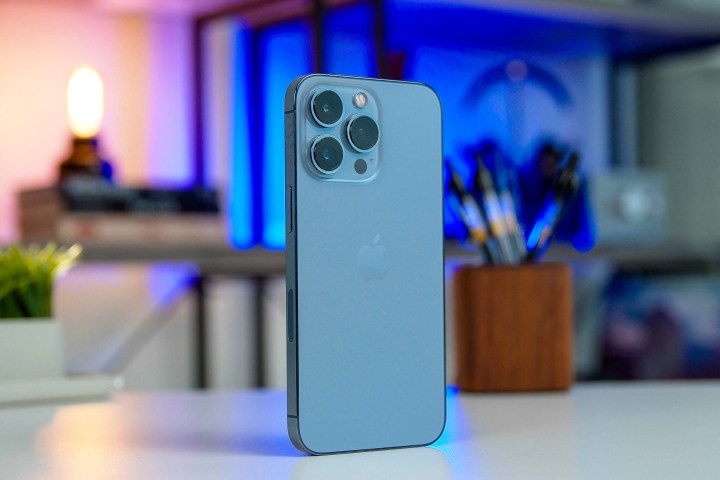
Dan Baker/Digital Trends
Apple iPhone 13 Pro
Best overall choice
Pros
- Packs lots of power into its size
- Incredible camera and video performance
- Very long-lasting battery
- Smooth and responsive 120Hz screen
- Comes with 1TB storage option
Cons
- No fast charging
- No USB-C
Why you should buy this: The iPhone 13 Pro contains an extremely powerful Apple chip and the best camera system, but it’s still reasonably priced.
Who it’s for: Anyone who wants the best Apple phone currently available.
With each passing generation, the iPhone provides more advancements. The iPhone 13 offers Apple’s A15 Bionic chip, with a 5-core GPU in the Pro model for up to 50% faster graphics. In layman’s terms, that means the iPhone 13 Pro is an exceptionally powerful beast indeed, and it’ll run anything you throw at it — and run it smoothly. Speaking of smoothness, the iPhone 13 Pro also has a new feature called ProMotion that allows for an adaptive refresh rate of up to 120Hz. That means the screen can refresh twice as fast as it used to, making your use feel silky smooth. The 6.1-inch screen has a high screen resolution, so it looks clean and crisp.
In addition to being faster and more powerful, the iPhone 13 Pro also has exemplary battery life. In our review, it showed it had the capability to stretch to two days, eradicating battery anxiety. The iPhone 13 Pro’s design isn’t all that different when compared to the previous model in the series, though it has some subtle differences. The camera bump is larger and the notch is smaller, and the phone also comes in a Sierra Blue color option in addition to graphite, gold, and silver.
One of the standout features of the iPhone 12 Pro was the camera system, which took exceptional low-light photos. The iPhone 13 Pro improves on this already-phenomenal camera system, with even better low-light capabilities, better apertures, and new features to produce more professional-looking shots.
Overall, the iPhone 13 Pro takes things up a level in several areas — performance, photos, battery, and features. You’re getting a better phone all around, making the iPhone 13 Pro the iPhone to buy.
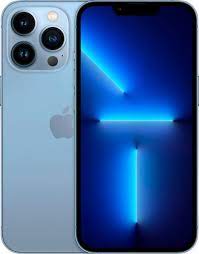
Apple iPhone 13 Pro
Best overall choice
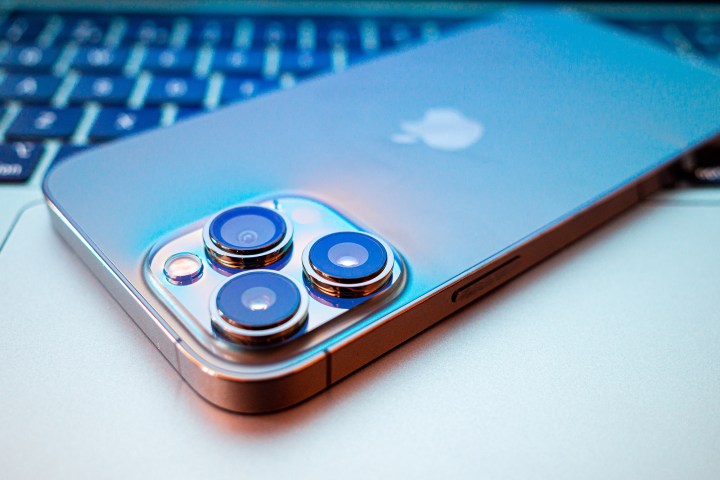
Ehimetalor Akhere Unuabona/Unsplash
Apple iPhone 13 Pro Max
Best with a big screen
Pros
- Massive display
- Incredible camera and video performance
- Super long-lasting battery
- Smooth and responsive 120Hz screen
- Optional 1TB storage
Cons
- No USB-C
- Not all third-party apps are optimized for higher refresh screen
Why you should buy this: It provides more screen real estate thanks to the larger display.
Who it’s for: Anyone who wants a large screen and an exceptional battery life.
The iPhone 13 Pro Max is similar to the 13 Pro in many ways. The design is the same, it has the same three camera lenses on the back, and the internal specs are also the same. The main differences are that the screen size is larger (6.7 inches), the battery is larger, and the price is higher.
If having a bigger battery and a larger screen size are important to you, the iPhone 13 Pro Max might be the way to go. However, keep in mind that the difference in screen size might feel quite a bit different in your hands if you’re used to a smaller screen. That extra half-inch can make the phone feel unnatural if you’re used to a 6.1-inch screen. But, if you’re already used to the 6.7-inch size and you want that extra battery time, the iPhone 13 Pro Max is one of the best large phones available.

Apple iPhone 13 Pro Max
Best with a big screen
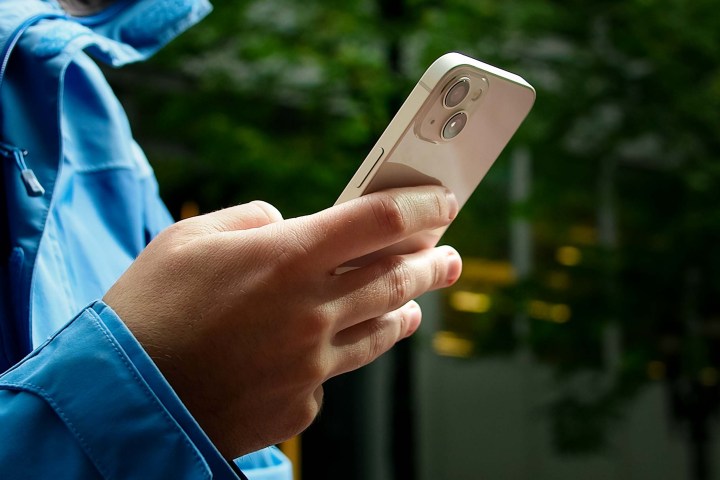
Dan Baker/Digital Trends
Apple iPhone 13
Best value
Pros
- Fast and responsive performance
- Excellent camera and video capabilities
- Long-lasting battery life
- Supports most premium features
Cons
- Still no USB-C
- No higher refresh rate or telephoto lens
Why you should buy this: The iPhone 13 has the latest and greatest technology Apple has to offer, all in a package that’s relatively affordable and manageable in one hand.
Who it’s for: Those who want the latest Apple phone, but don’t care as much about camera extras or add-ons.
Although it’s technically the base model in the series, there’s nothing basic about the iPhone 13. The iPhone 13 is a powerhouse, with the same A15 Bionic chip as the iPhone 13 Pro, so it’s just as stupidly powerful. However, while the iPhone 13 has the same sized display as the Pro model, it lacks ProMotion technology, so it won’t feel as smooth. Aside from that, though, it’s an extremely similar experience where specs are concerned.
The camera system on the iPhone 13 is not as sophisticated as that of the iPhone 13 Pro, though. But while the dual camera system on the iPhone 13 might not be as advanced as the camera system on the Pro, it still takes phenomenal photos, and you’re unlikely to come away disappointed with the shots it takes.

Apple iPhone 13
Best value
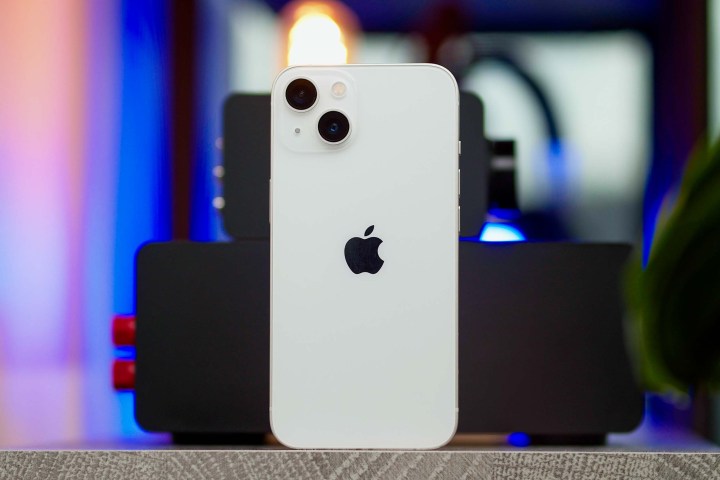
Dan Baker/Digital Trends
Apple iPhone 13 Mini
Best for small screen lovers
Pros
- Compact size and small display
- Same color options as regular iPhone 13
- Crisper resolution than iPhone 13
Cons
- Small display might not be for everyone
Why you should buy this: It can fit in your pocket, but it’s more powerful than many modern flagship phones.
Who it’s for: Those who want a capable yet small phone that can fit in one hand.
If you’re looking for advanced iPhone 13 technology, but you want a smaller screen size, you might want to look at the iPhone 13 Mini. The 5.4-inch display makes the phone small enough to hold in a single hand, while the screen is still large enough to view from a distance. The Mini version of the iPhone 13 comes in all of the same color options as the regular version, and with a 2340 x 1080 resolution, the Mini actually has a crisper screen than the regular iPhone 13.
The iPhone 13 Mini is a phone for those who want the latest and greatest iPhone but don’t value screen real estate, camera advancements, or feature upgrades so much that they are willing to pay more.

Apple iPhone 13 Mini
Best for small screen lovers
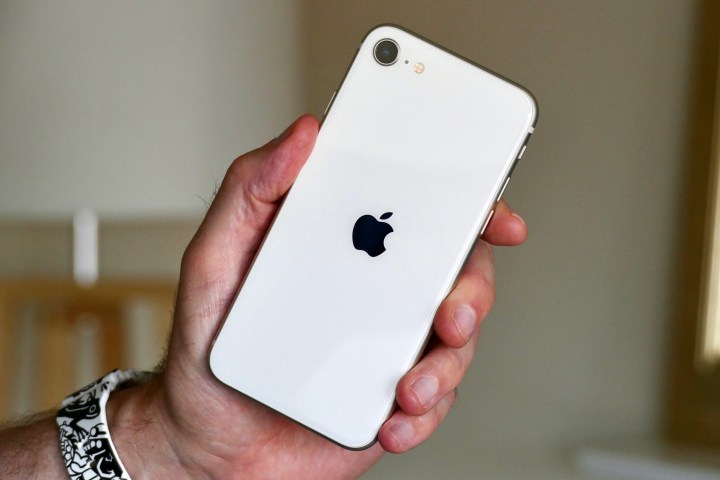
Andy Boxall/Digital Trends
Apple iPhone SE (2022)
If you’re really on a budget
Pros
- Compact and light
- Very powerful
- Touch ID works really well
- Wireless charging
- IP67 water resistance
Cons
- Poor battery life
- 60Hz screen
- 64GB won’t be enough
Why you should buy this: If the iPhone 13 is financially out of reach, the iPhone SE (2022) is the cheapest way to buy a brand new iPhone from Apple.
Who it’s for: You want an iPhone, but you need to save some money.
Apple’s iPhone SE (2022) starts at $429, making it the cheapest brand new iPhone you can buy at the moment. Yes, it has its limitations, but for the money, it’s a great little smartphone. True, the iPhone 8 design is dated and chunky, but you get the same tough glass used on the iPhone 13 (minus Ceramic Shield). It’s also compact enough for one-handed use and a great choice for those who prefer a smaller phone.
Under the hood you get Apple’s brand-new A15 bionic chip, the same found in the iPhone 13 lineup, plus 4GB of RAM and 64GB, 128GB, or 256GB of onboard storage, plus a bigger battery than its predecessor, so you should be good to go all day without recharging.
The 4.7-inch Liquid Retina Display boasts 1334 x 750 resolution (around 326 pixels per inch) and a 60Hz refresh rate, ensuring everything looks crisp, with True Tone technology, haptic touch, and wide color support. Yes, it’s a small screen, but it’s still impressive. You also get a single-lens 12MP camera on the rear and a 7MP selfie camera, both performing well, provided lighting conditions are good, though there’s no Night mode. You also don’t get Face ID, though the Touch ID fingerprint sensor is very reliable.
Finally, the latest iPhone SE packs 5G, making it an excellent future-proof choice. Only sub-6GHz (and C-Band) 5G are supported for now, but this is still a big upgrade over 4G in terms of speed, provided you live in an area where 5G is available.
For those who play a lot of the latest, demanding games or watch a lot of videos, the new iPhone SE (2022) might not be the right choice. It might also not be right for you if you take most of your photos after dark or in poor lighting, due to the lack of Night mode. Otherwise, if you want a powerful processor, plenty of onboard storage, and a stunning display, without breaking the bank, there’s no cheaper way to get these things than with the iPhone SE (2022).

Apple iPhone SE (2022)
If you’re really on a budget
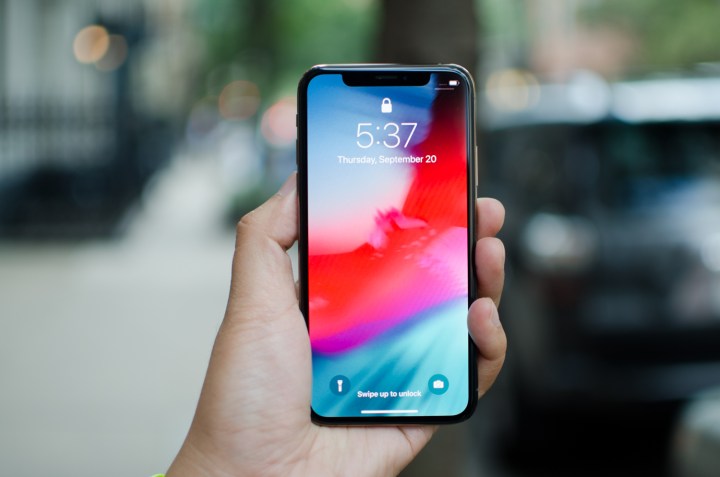
Julian Chokkattu/Digital Trends
Apple iPhone XS
Buy it used or refurbished
Pros
- Gorgeous OLED screen
- Day-long battery life
- Smart HDR is impressive
- Perfect size, beautiful design and build
- Smooth performance
Cons
- Missing fast-charging cable, charger, headphone dongle
- Expensive
Why you should buy this: The XS may be a couple of generations old, but it still feels pretty new — and can be had at a steep discount.
Who it’s for: Anyone who wants a cheap full-size iPhone for a family member, or someone who wants to get started with an Apple phone without spending much.
The iPhone XS launched at the end of 2018, which means it’s in a sweet spot of being old enough to be deeply discounted but still new enough to run the latest iOS software and feel like a modern phone. It has a 5.8-inch OLED screen with Face ID face unlocking, and the phone is new enough to still receive Apple’s software updates for a couple more years as well. On the back is a dual-lens camera, taking 12MP images along with 2x optical zoom shots.
It’s not as advanced as the iPhone 13 and iPhone 13 Pro’s cameras, and it doesn’t have the high performance of those phones overall. Apple’s A12 Bionic processor is no slouch, it has a battery that will last all day, and it supports wireless charging.
But here’s the great part: So many people bought the XS new and have now upgraded in the subsequent years that there is an incredible number available on the refurbished market. When it was new, the iPhone X started at $1,000, so how much can you get one for today?
If you search online stores like Amazon’s refurbished store and Walmart, the iPhone XS can often be picked up for $300 or less, which represents very good value. Local retail stores specializing in refurbished phones may also have good deals, as could eBay.

Apple iPhone XS
Buy it used or refurbished
Frequently Asked Questions
iPhone buying guide
Buying an iPhone is a shrewd purchasing decision. Not only are you getting a well-made smartphone that will serve you well for several years, but it will be supported with software updates from Apple for up to five years after its launch date.
Additionally, regardless of which model you choose, the trade-in value of an Apple phone is usually higher than any other brand. Prices vary depending on where you sell it, its condition, whether it’s an unlocked device or not, and the age and memory capacity of the model. When you decide to upgrade to a new phone, the extra return from your old iPhone is a considerable benefit.
If you’re coming to an iPhone from an Android phone, remember some data may not easily transfer over, and you will have to get used to a new software operating system. For example, data saved in some messaging apps (WhatsApp, for example) can be difficult to export or import, so you may start with a clean slate. While iOS is logical and easy to use, it will feel different, so expect a learning curve before it feels like home.
Another aspect newcomers may not realize straight away is that Apple iPhones do not have expandable storage. When you buy a 64GB, 256GB, or 512GB iPhone, that’s all the storage space you get. Some Android phones have a MicroSD card slot, but not iPhones. Instead, you can use the included iCloud online storage as an additional space; but bear in mind you only get 5GB free. To increase this, you have to pay a monthly subscription starting at $1 per month for 50GB. This is why we recommend paying extra for larger capacity iPhone models when you buy one.
Finally, once you’re inside the Apple ecosystem, it can be difficult to escape. Many accessories are Apple-only, apps you purchase can’t be swapped to Android or vice versa, and if you buy an Apple Watch Series 7 or Apple Watch SE — which we recommend if you want a smartwatch — then it only works with an iPhone. Provided you understand the commitment you’ll be making for the next two years minimum, an iPhone will serve you so well, that you may not want to switch to another brand at all.
How we test
Why should you pay attention to our recommendations? We have reviewed iPhone models since the very beginning, along with almost every major Android smartphone too. When we try out a phone we live with it every day, mostly as our only smartphone, to see how it performs doing the tasks we all need it to on a daily basis. This way, we get to see where it excels, and also where it may fail. Then we tell you all about it.
For that reason, we can make educated recommendations on which phones are worth it. Buying one of these is not just a lot of money, it’s committing to one phone for up to two years, should you buy it with a contract through a carrier. You need to make sure the decision is the right one, and being as informed as possible ahead of laying down your money is sensible.
We’re confident buying an iPhone is one of the best decisions you can make in the smartphone market, based on our experience, and the models above are the ones that deserve your attention.
Editors’ Recommendations




